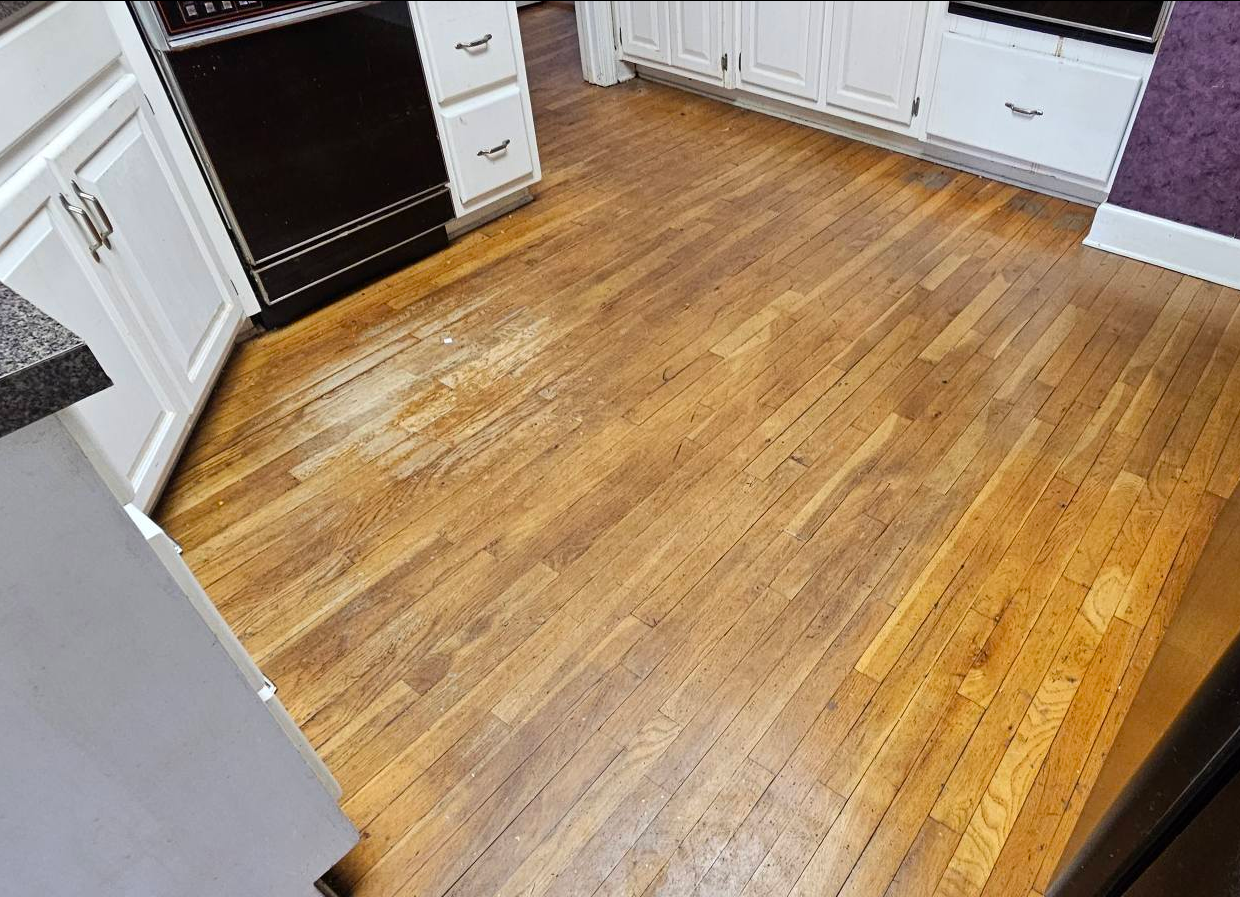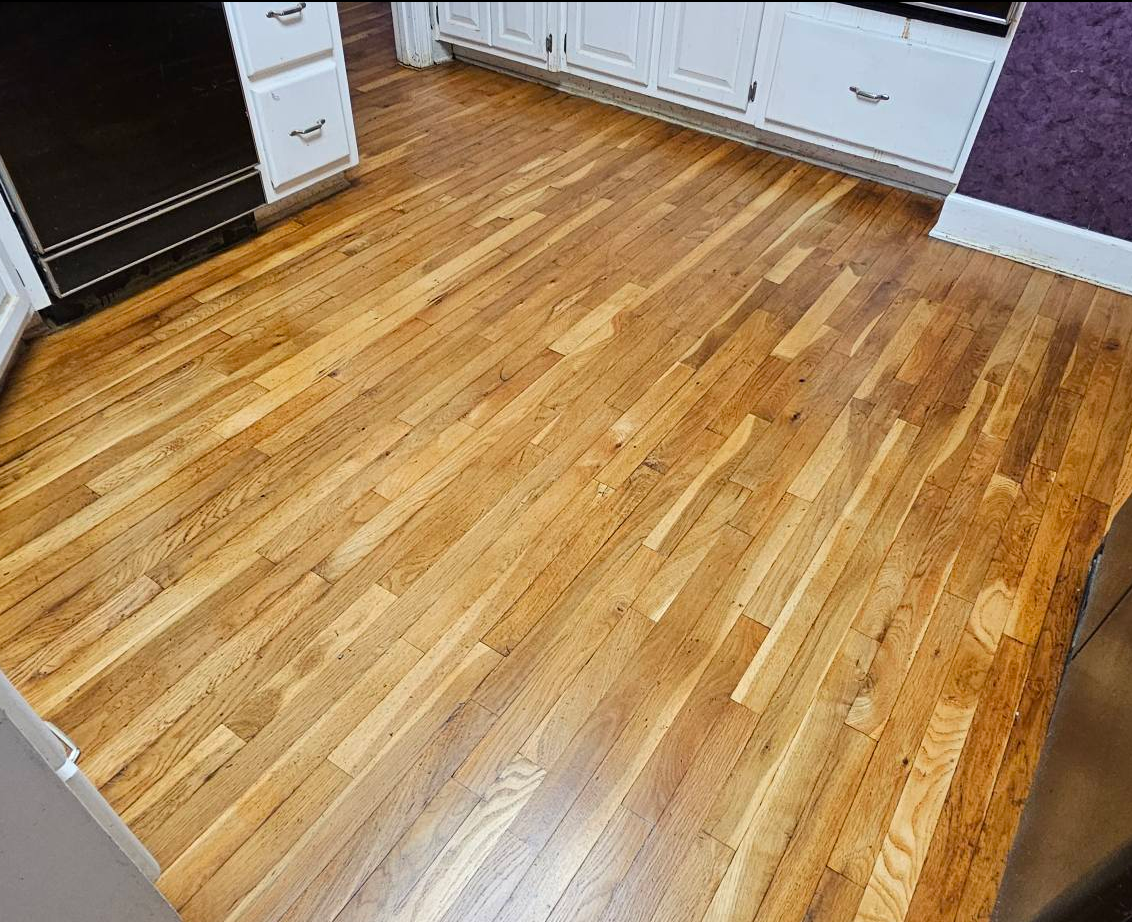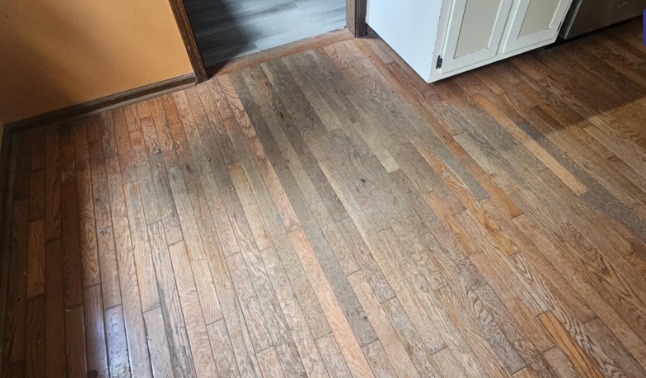Hardwood Floor refinishing made simple
Over time, hardwood floors can start looking dull or scratched. Instead of replacing them, screening and recoating is a simple way to make them look shiny and new again!
How It Works:
- Screening – This is like giving your floor a “mini makeover.” We use a special machine to gently rough up the old finish, kind of like sanding but much lighter. This helps the new coat stick better. Sort of like when you car gets buffed and waxed!
- Recoating – After screening, we add a fresh layer of protective finish. This makes the floor look smooth, shiny, and protected from scratches.
Why Is This Important?
- Saves Money – It’s much cheaper than sanding or replacing the floor.
- Quick & Easy – It usually takes just one day!
- Protects Your Floor – Helps prevent deeper damage and keeps your hardwood looking great for years.
If your hardwood floors are looking worn out but don’t need a full sanding, screening and recoating is the perfect refresh!




Screening & Recoating vs. Sanding Hardwood Floors: What’s the Difference?
Hardwood floors can wear down over time, but not every floor needs a full sanding! Here’s how screening and recoating compares to sanding so you know which option is best for your floors.
Screening & Recoating: A Quick Refresh
- What it is: A light process that smooths out the existing finish and adds a new protective coat.
- Best for: Floors with minor scratches, dullness, or light wear.
- Time required: Usually finished in a single day.
- Cost: More affordable than sanding since it’s a quicker process.
- Dust & mess: Minimal dust because we don’t remove the wood itself.
Sanding: A Complete Makeover
- What it is: A deep process that removes the old finish AND a thin layer of wood, exposing fresh hardwood before applying a new stain and finish.
- Best for: Floors with deep scratches, stains, or worn-down areas where the finish is completely gone.
- Time required: Can take several days, especially if staining.
- Cost: More expensive than screening and recoating due to the extra labor.
- Dust & mess: Creates a lot of dust and noise, though some sanding machines reduce dust.
Which One Do You Need?
- If your floors look dull but don’t have deep damage, go with screening and recoating for a fast, budget-friendly refresh.
- If your floors have deep scratches, stains, or uneven color, sanding is the better choice to fully restore them.
No matter what, both options will bring your hardwood floors back to life!
Cost of Screening & Recoating vs. Sanding Hardwood Floors
When it comes to cost, screening and recoating is the more budget-friendly option. On average, it costs between $1 to $3 per square foot, while sanding and refinishing can cost $3 to $7 per square foot or more.
Sanding is more expensive because it’s a labor-intensive process that removes the old finish and a layer of wood before applying a new stain and protective coat. If your floors only have surface-level wear, screening and recoating can save you hundreds (or even thousands) of dollars while still making your hardwood look refreshed and polished. However, if your floors have deep scratches, stains, or major damage, sanding is worth the investment for a full restoration.
